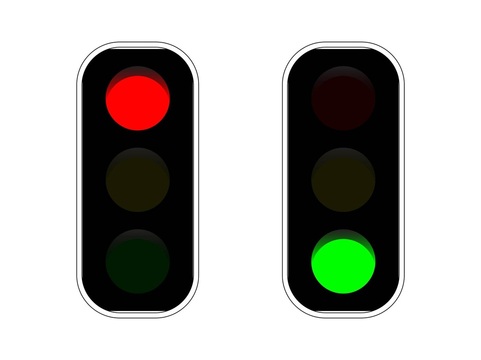I remember playing in the back yard with all the neighbor kids.
My dad turned his back, and the game began as he yelled green light! We crept closer to tag him, knowing that the moment he spun around and shouted red light, we would freeze in our tracks. The first one to reach him without being sent back to the starting line was the winner.

Coming back to the workplace has become a modern-day version of green light red light. The green light means go (safe desk, the red light means stop (unsafe desk). The part where we freeze? That’s orange, the cautionary warning traffic signals, which is the new curveball in the game.
Accommodating work patterns, shift scheduling and virtual team rotations are reflective of the current workplace. Contributing to the need for safe space, which is more than just distancing by 6 feet or 2 meters, a health risk lies with the individual, yet the responsibility for safety rests with management. How long droplets linger in the air remains a guesstimate, meaning there is no magical rule around safe distance or the right protective garments. As an example, it is impossible to puff a cigarette, yet avoid breathing the exhaled smoke. Compare this to not inhaling the virus in communal workspace where team members are talking, sneezing, and moving around.

Accordant puts it in simple terms: what makes a desk green or red? As mentioned above we are all familiar with the universal traffic light system. Therefore, it reasons that a green desk is a usable desk. Overlaid with a green circle, it represents a distancing bubble that adheres to safe standards. A red desk is an unusable desk. Overlaid with a red circle, that area is unsafe, not adhering to best practices for a safe workspace. On every floorplan, on every floor, there will be cautionary stations and desks. Although within the amber circle, you are separated by what is considered a ‘safe’ distance, your bubble of safe space could overlap someone else. This means if you were both to move around at the same time the distance between you becomes too small.
The color of a desk will change every time a booking happens. Each user can then make a choice as to what desk or workstation they feel comfortable booking. The green/amber/red light visual floorplans easily display usable from non-usable desks. Based on social distancing norms, whole teams make informed decisions on where they find seating that meets their expectations. Areas graphically display high-capacity zones, availability to safety stations, shared areas and directional signals within social distancing perimeters against the number of employees allocated to an area.
We know the office looks a lot different. Beyond distancing standards, every workspace continues to focus its attention to control office capacity, maintain enhanced housekeeping, and improve shared space regulations. Reflective of the debate surrounding what determines safe space in the office, it represents what safe space means to an individual: some are more comfortable returning to the office, others extremely hesitant.
Big business including Yahoo, Bank of America, Aetna and IBM are reducing and/or completely eliminating telecommuting programs. Office real estate is the second biggest cost to a business after staff, so you can see the appeal of reducing this footprint. Regardless, each business should consider what long-term effects to the psyche might be following the removal of the virtual employment perk that has increased worker productivity. Additionally, businesses that encourage staff to return must take on the responsibility of providing them with tools offering a level of confidence in existing health and safety practices.
Although there is no such thing as zero risk, proper distancing between workstations can make a difference as standard guidelines continue to adjust. So…is the current office environment like playing green light red light? Yes! Does the winner tag the caller? No, the winner follows the rules and stays healthy.